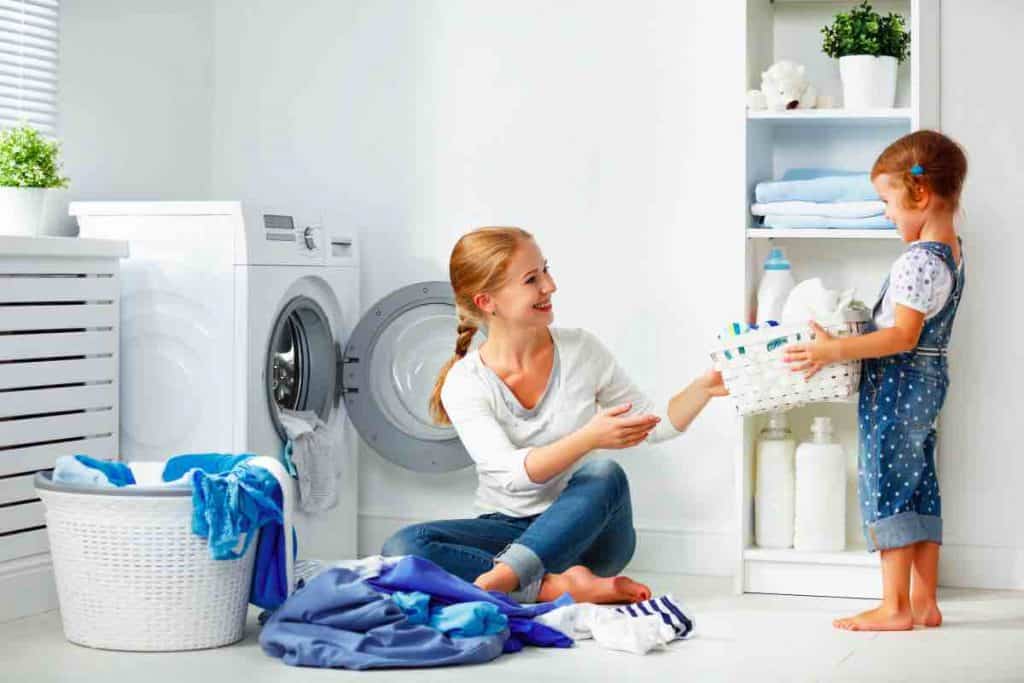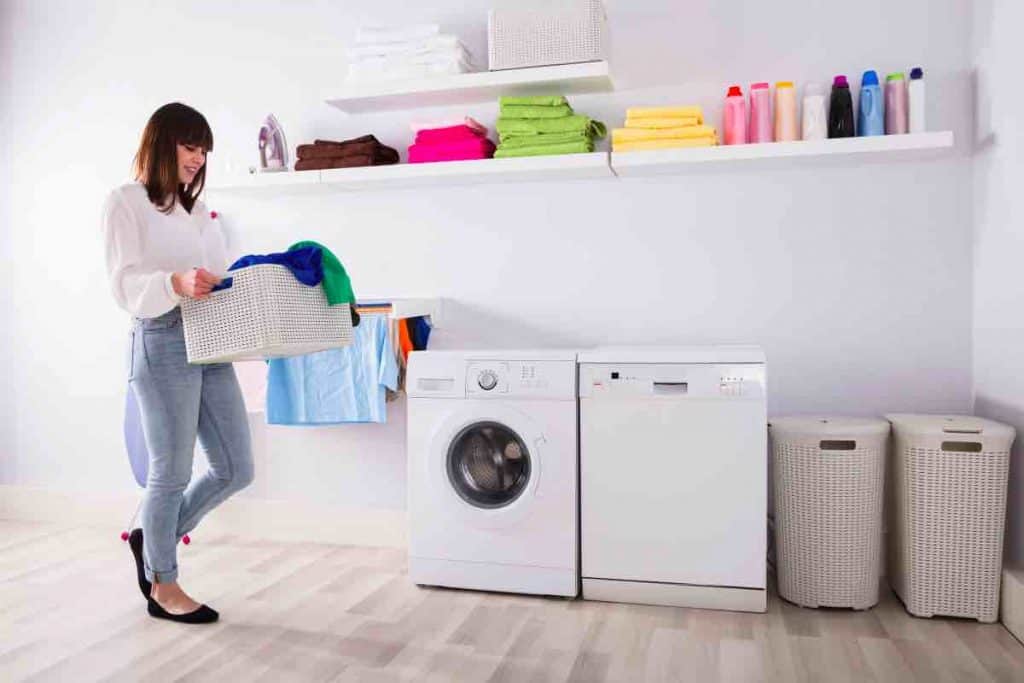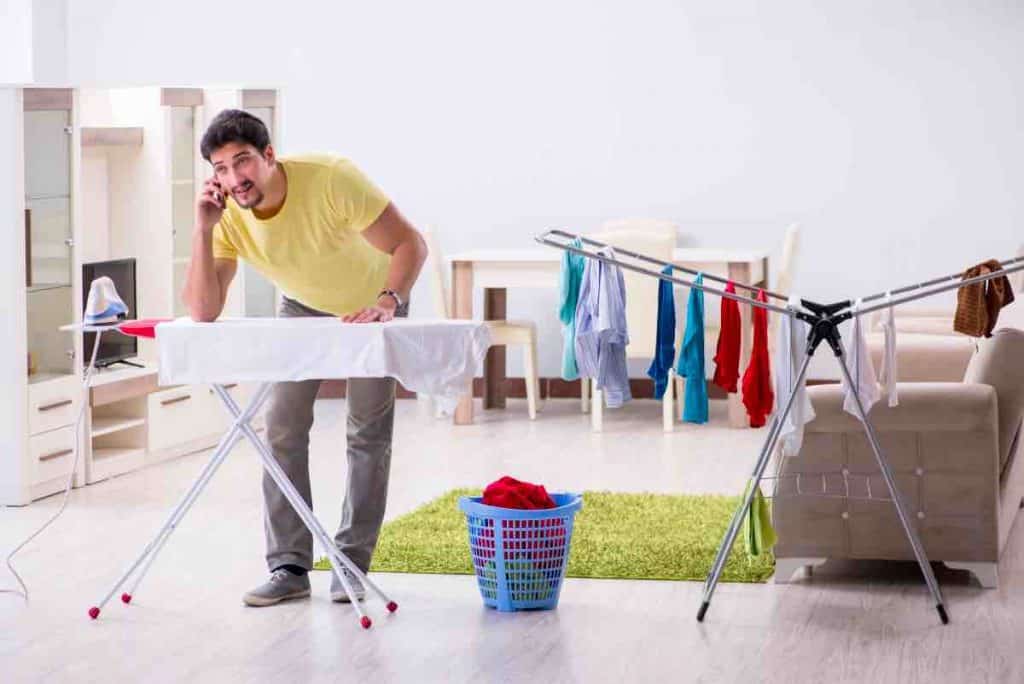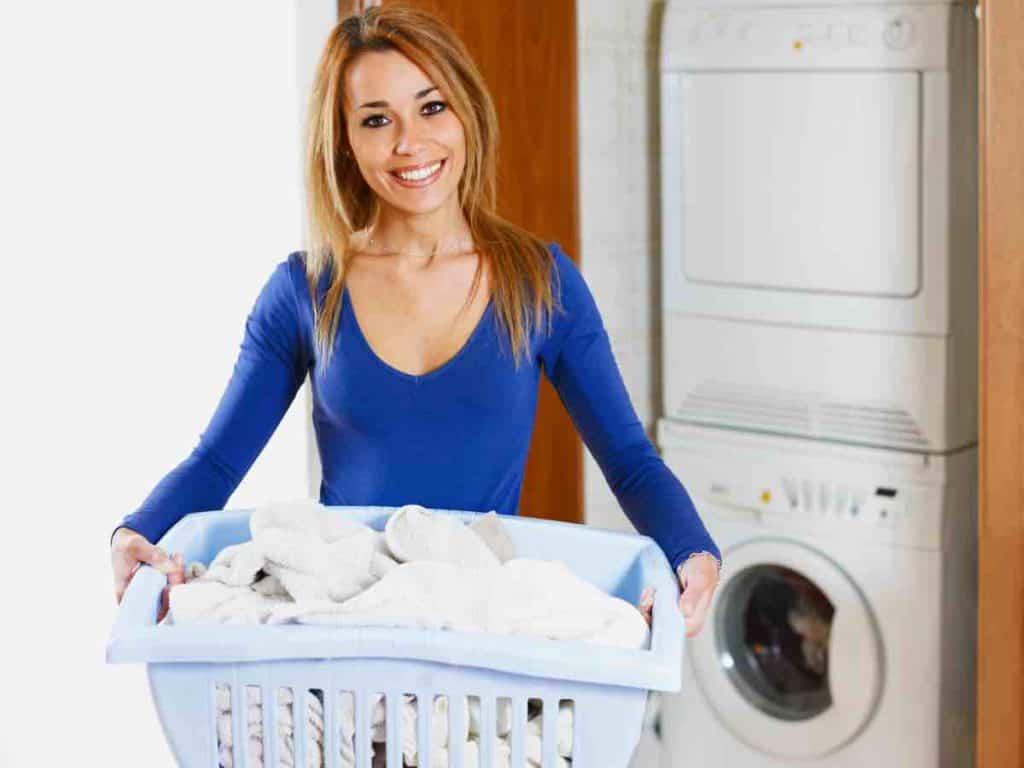A home is filled with endless love and laundry.
“I just love doing the laundry!” said no one ever. I won’t go as far as to say I love doing laundry, but a renovated laundry makes the process easier, more efficient and better on the eyes. If you’re currently planning your laundry room remodel, here’s how you can make the process as easy as possible.
Find inspiration
Start a laundry room inspiration board to see how others have effectively organised their laundry room space. It will be especially valuable to look at rooms that are similar in shape or size to yours. It is not all about function, maybe you’ve dreamed of having a wall of trendy tile or a bold, experimental colour scheme.
We all spend too many hours in the laundry, so it should be a beautiful space that makes doing chores almost pleasant. There are so many beautiful laundry design examples, get inspired and get some ideas about adapting your laundry. The more laundry ideas you research, the better idea you will get of what you like.
Necessity list
Make a list before you begin your renovation so that you won’t have any unexpected changes later on. A clear list will help you to know what has to happen before you start the laundry renovation. Do your research and spend some extra time planning so that your laundry has enough space to hold a washer and dryer, sink, countertop space, storage, laundry baskets and still has enough room to move around.
We all experienced the frustration of a too cluttered laundry. We have to consider the type and size of the washer and dryer to get the dimensions right. If you intend to use a front-loading model, which way does the door open is something to consider. If space allows, consider a dedicated place for storage of everything your pet needs.
Design your space
A beautifully designed laundry space can lighten the load. It’s those overlooked areas that can make your laundry room more convenient and comfortable. Laundries often are a poorly designed space in the home, which is surprising given how much it is used. It is important to know how you will use your laundry and what you want to store.

Design your space to streamline the washing, drying and folding process. Plan your layout so that there is enough space to move around comfortably and safely. A few ideas are a built-in bench that stretches across an entire wall for the folding of laundry, installing an oversized sink that can handle some grit or including a space to store a rail to hang wet clothes. In a double-storey home, incorporate a laundry chute, it can be installed inside a wardrobe or hidden behind cabinetry directly above your laundry cupboard.
Doing laundry itself can be a pretty bland task, and often take up a good portion of our time. If you make your laundry room more functional, it also speeds up the process and gives you back some valuable time.
Make storage a priority
Ample storage is gold in your laundry. Laundries store everything from dirty washing, cleaning products, and even pet supplies, therefore having enough usable storage space for all of it is crucial. Cupboards or shelving is great to store things like cleaning products and break ware away from little hands. Include a combination of cabinets, overheads, drawers and benchtop space for the ultimate storage hub. Space to put and fold the clothes is an excellent place to start. Enough cupboards ensure space for everything, especially since laundries double as utility rooms.
Open shelves are getting more popular as it improves the aesthetics of the laundry room by displaying candles or fresh towels; this finishing touch gives it that designer look. Installing an open rail to air clothes on hangers, reduces ironing and also frees up bench space. Keep an ironing board that folds down from the wall or a wall-hung one to save on space. A rack to hang clothes on hangers reduces ironing and makes a world of difference. If you have a stand- alone or garage laundry, be smart with space, for example, hang your dryer on the wall. It’s always a good idea to have sufficient sorting space.
If you create a functional layout, it reduces the amount of time spent doing laundry. Adding simple things such as a pullout shelf beneath your washing machine for your washing basket and you can load and unload washing.
Cabinetry
Something to consider is custom cabinetry that gives you more flexibility in the storage design. Custom cabinetry maximises the amount of storage you get because it’s tailor-made for your space.
If you can incorporate a closed cabinet, it helps with storage, and it makes the laundry room appear organised and neat. Plan a specific place, like a tall cupboard, to store the ironing board, mop and vacuum cleaner so that they are out of view. Rail shelving is an alternative to use that allows air to circulate from underneath, so your linen won’t get so musty.
If you have a separate laundry room, max out your space with storage up to the ceiling. Try a combination of open shelving for displaying towels and closed for a clutter-free appearance.

Safety Considerations
A well-planned laundry covers all safety risks. It requires you to use electricity, lift the weight, or deal with a variety of chemicals. It is important to consider this through the layout of the room to minimise any potential hazards. Installing proper wiring and giving thought to the locations of your outlets so that it is more accessible to plug-in appliances. It is convenient to hide washing machine plumbing taps and power points in a cupboard next to the washer. If you drill a large hole at the back of the cabinet, you can pass your cables and hoses through There are many benefits of overhead cabinets such as it provides a safe place to store harmful chemicals out of reach of little ones. Laundry is a wet area, so your surfaces and flooring have to be water and mould resistant.
Location Location Location
The ideal location flows directly from the kitchen or pantry, with a second access from a hallway in your home. It’s not always possible to relocate a laundry here, especially if you’re renovating. Your laundry should be away from bedrooms and living areas. When your appliances are in use, it resonates throughout resting or entertaining areas. If space is a commodity, it’s practical to locate your laundry off your garage so that it serves as access or hallway from your garage into your home. If it is not possible to have a dedicated laundry room, integrate your laundry into a bathroom or kitchen, or within a cabinet in a hallway.
Dual Purpose
In a modern world that embraces multitasking and where you struggle with insufficient floor space, many renovators couple up their laundry and bathroom facilities, with some smart planning, the laundry room won’t look like it’s too full. Sharing these two areas also makes getting the plumbing and ventilation a lot easier as they now share a location.
Lighting plays a crucial role in shaping the overall appeal and the practicality of multipurpose spaces. Ensure that there is a beautiful combination of task lighting for laundry tasks and natural light for bathroom purposes.
Outdoor Access
Simple access from your laundry to the backyard makes it convenient to hang clothes on the line. It saves money, energy and wears on your clothes when you use your dryer less. If the laundry has outdoor access, it diverts grey water to use on the garden. By locating your laundry with free access, you can open the back door to draw out the excess moisture and thereby reduce potential mould issues. It is therefore practical to ensure your laundry has reasonable access to a clothesline or external drying area. Include direct access to your clothesline and ensure you have adequate ventilation through a window or an exhaust fan. Ensure there is sufficient lighting through windows or a skylight and consider installing task strip LED lighting within your cabinetry.
Proper Ventilation
If there is not an option of an outside access laundry, you have to improve ventilation. This tackles the excess humidity from the room, especially if it doubles up as a bathroom. Excess moisture in the laundry causes costly damage, and there are the health issues that can arise when you’re dealing with mould. Make sure there are ventilation opportunities like a window, a ceiling fan or air conditioning.
By improving ventilation in the room, you are also promoting health and safety by reducing the fumes from cleaning products that often have their home in the laundry. Position the laundry in a room with a window; ventilation is a critical factor in laundry design.

Budget for it
Give yourself flexibility in your budget for any unexpected costs. If you are renovating an existing laundry, keep all your plumbing and electrics in the same position to avoid excess trade bills. If your laundry has an impractical layout, spend some money to make your space more functional and enjoyable.
Going for pre-made cabinets are great for your budget, but there is space that could have been better utilised. Built-in cabinetry optimises the space you have but is more costly than other storage options.
Special orders
If you choose items that are in stock at your local hardware store, it is your safest bet. To make your laundry room more unique, you can order a few things. This could add a bit of lead time, so make sure to plan accordingly. Also, things like countertops and custom cabinets can take extra time to construct and install, so planning is vital. It is particularly helpful when designing storage space to think of what you want to achieve with space. Make sure everything has a place, so you don’t forget about things.
Appliances
An essential step in your laundry design is to choose appliances or measure your existing appliances. Most washers and dryers come in standard sizes, but some are extra-wide, tall or deep. You don’t want to find that your machine doesn’t fit, or there are significant gaps in either side when you want a unified look. It’s vital to choose appliances before moving onto the next step. It helps to elevate appliances to reduce bending or crouching.
If you have a tiny nook to work with, stacking your washer and dryer makes the laundry room more functional. You can raise your washer and dryer off the floor, which helps you with bending over. If you need a workspace, for folding clothes having the front loader washer and dryer side by side is the way to go.
Position your washing machine between your sink and laundry basket, allowing you to transfer clothing between these areas. Placing the dryer next to or above the washing machine reduces double handling. This will ensure you have a space close-by so laundry can be folded directly from your dryer. Take care with the acoustics, install noise-control walls if possible, to stifle the washing machine on spin cycle.
Make a list of the things you would like to achieve out of your laundry space. Refer back to this throughout your design and build process, like what appliances and items need to get stored.
Planning a major home renovation can be very overwhelming and finding the right information can be difficult. To help you we have developed a free guide that is beneficial for anyone who is in the planning stage of a major renovation. I know you will enjoy it. It is packed with super practical information covering 7 of the biggest mistakes made when planning a major home renovation.
Click on the link below to download the 7 Biggest Mistakes To Avoid When Planning Your Major Home Renovation.
Download our FREE guide and avoid mistakes that will cost you money and time on your renovation.


